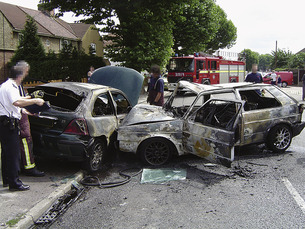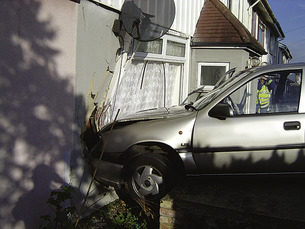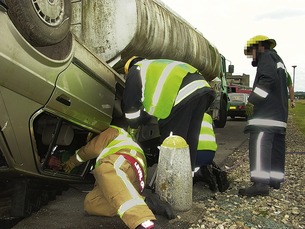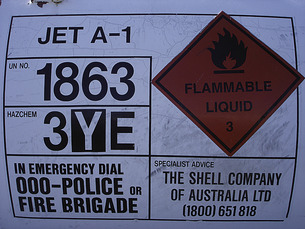CASE 2
 |
| Image A. |
 |
| Image B. |
 |
| Image C. |
 |
| Image D. |
 |
| Image E. |
 |
| Image G. |
 |
| Image H. |
Question
2.1 For each of images A-H, describe the scene giving relevant safety information specific to each.
Discussion
2.1 Vehicle crash: car versus car (Image A)
The key concern here is fire. The Fire & Rescue Service is in attendance and there are several people on the scene. The casual appearance of the attending personnel at this scene does not make the safety aspects any less important and other emergency services (in this case the Police Service) close to the scene do not necessarily mean that the scene is safe. In addition, the fact that other emergency services have removed parts of their PPE should not encourage the PHR team to do likewise. The Fire & Rescue Service team leader should be sought and scene safety verified before approaching the vehicles.
At the scene, careful attention is required to vehicles that may be hot to touch. A build-up of noxious fumes is also possible within the vehicle. A smouldering vehicle may reignite without warning and a safe distance should be kept from the scene after the initial assessment has been carried out.
Be wary of other traffic passing by. Drivers will be looking at the incident and there is the risk of being hit by another vehicle. Ensure the Police Service has closed both lanes of the road if you plan to spend time near the vehicles (e.g. for extrication).
Vehicle crash: partial rollover (Image B)
Vehicle stability is a problem here and the PHR team will need to discuss with the Fire & Rescue Service the best way of stabilising the vehicle in light of the patient’s condition. Plastic blocks and wedges can be used to minimise movement and, on occasion, a chain can be used to hold the car in position. The stabilisation will need to be more secure if the PHR team is planning to access the vehicle and treat the patient inside.
< div class='tao-gold-member'>
Only gold members can continue reading. Log In or Register to continue
Stay updated, free articles. Join our Telegram channel

Full access? Get Clinical Tree








